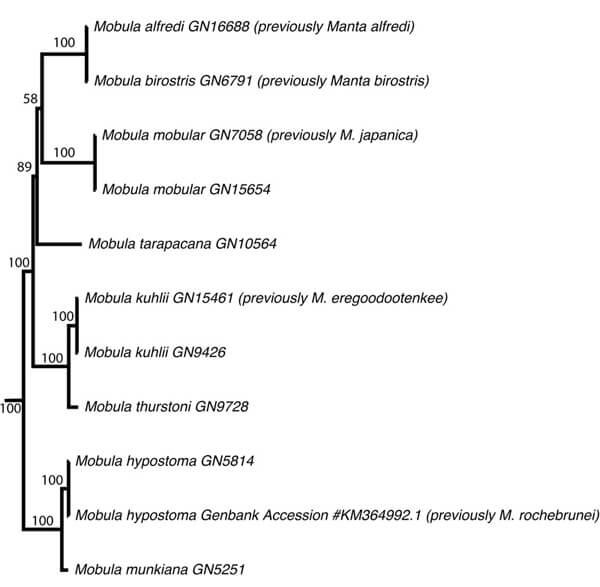
A comprehensive study of the DNA of the rays that – up until last week – were known as mantas and mobulas (or devil rays), has seen the taxonomic reclassification of mantas into the genus Mobula.
The full scientific report is available from the Zoological Journal of the Linnaean Society, but the short version is that the first complete study of the genetic makeup from all known species of the mobulidae family has shown that manta and mobula are much more closely related at a genetic level than first thought, and also that three species of mobula are, in fact, virtually identical to three others.
Two species of manta, Manta birostris (the giant, or oceanic manta) and Manta alfredi (reef manta) had previously been classified under a separate genus, primarily for their morphological (physical) differences to other mobulidae. A possible third species, Manta birostris sensu, is the subject of research by Dr Andrea Marshall of the Marine Megafauna Foundation, but has yet to be formally classified.
The primary physical difference between mantas and mobulas is the location of the mouth, which is terminal in mantas, (that is at the front of the body), and subterminal in mobulas ( postioned slightly behind the front of the body). However, the report concludes that this very distinctive physical difference does not warrant the separation of the genera, as the genetic makeup of the species is otherwise very similar.

Physical differences in size and shape do not always distinguish different creatures on a genetic level – the human race being a perfect example – and therefore as a consequence of the study, henceforth the animals formerly known as ‘manta’ are to be formally classified as Mobula birostris and Mobula alfredi. As stated in the report: ‘results from this study are used to revise the taxonomy for the family Mobulidae. A single genus is now recognised (where there were previously two) and eight nominal species (where there were previously 11)’
For the same reasons, other species of mobula have also been integrated: M. japanica (spinetail devil ray) has been reclassified as a smaller variety of M. mobular (giant devil ray); the pygmy devil ray M. kuhlii broadened to include the excitingly named M. eregoodootenkee, despite differences in the length of their cephalic lobes (the small fins present either side of the mouth), and M. rochebrunei (lesser Guinean devil ray) and M. hypostoma (Atlantic devil ray) have been brought together under the latter naming convention, despite a range of small physical variations.
The new naming convention is displayed in the diagram below, taken from the online report. Taxonomic names, however, rarely have any impact on the common names used to identify our favourite underwater critters. Although they might now technically be called mobulas, divers will almost certainly refer to these wonderful creatures as ‘manta’ in perpetuity.



